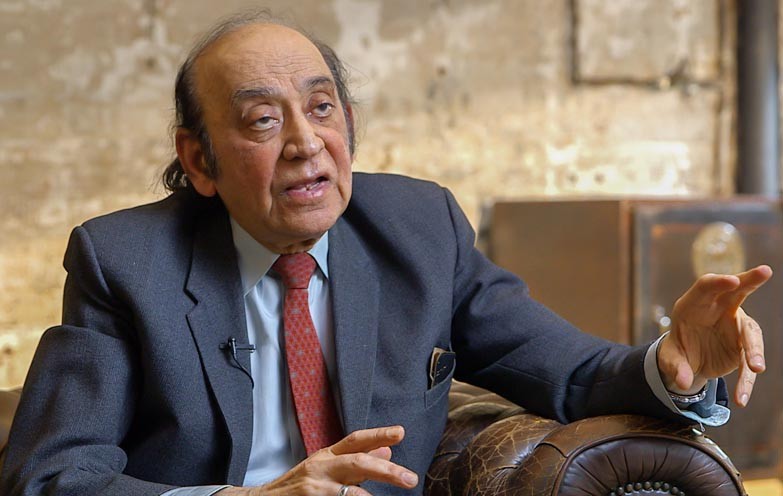
Dilip Hiro’s latest book delineates the roots behind the Saudi-Iran conflict that has lasted a millennia and a half

In many ways, the visit of Saudi Crown Prince Mohammed bin Salman al-Saud to Islamabad last month formalised what had been obvious for the world all along: Pakistan is now formally, and loudly, in the Saudi led camp against Iran.
Those still in doubt can check out Tehran’s allegations against Islamabad of ‘harbouring terrorist groups’ which have been on the rise in the past couple of years. These, of course, bear an uncanny resemblance to the echoes from New Delhi.
While Pakistan has historically always tilted towards Saudi Arabia, it has managed to maintain a façade of ‘balancing’ ties with Iran as well. However, all pretensions were thrown out of the window once Pakistan decided to not just join but militarily command the so-called Islamic Military Counter-Terror Coalition (IMCTC), whose raison d’etre has become even more obvious now that its original ostensible target, the Islamic State (ISIS), has largely been wiped out from the Middle East even before the military alliance became operational.
In this regard, Dilip Hiro’s latest book Cold War in the Islamic World: Saudi Arabia, Iran and the Struggle for Supremacy underlines precisely what Islamabad is signing up for. It maps out the ties between the two countries and delineates the roots behind the conflict that has lasted a millennia and a half.
Hiro has over 30 published works of non-fiction including, notably, After Empire: The Birth of a Multipolar World, Inside Central Asia, and Apocalyptic Realm: Jihadists in South Asia. His writings have ranged from Middle East affairs, the wars of the Levant, race relations in the UK, Islamic terrorism, with much of his recent focus being on Iran.
In the Cold War in the Islamic World, Hiro sheds light on the multi-pronged factors shaping up the Saudi-Iran rivalry, from the theological differences to political ambitions.
The book’s introduction lays down the contrasts in the beliefs of the two countries and how the differences then developed into something much more ominous. Hiro’s contentiously maintains that "Saudi Arabia is the only modern state that owes its existence to Jihad."
Even so, Cold War in the Islamic World reaffirms that the Saudi-Iran conflict is rooted as much in their differences as their commonalities, as Hiro discusses the countries’ vast oil reserves and the American influence post World War Two, moving on to the assassination of the Saudi King Faisal to the plans that the US and UK had for the Shah of Iran.
One of the highlights of the book is its comprehensive narration of historical events -- and not just the major milestones -- which have culminated in the ongoing hostility between the two states. It is packed with historical references, meticulously linked to the scores of political developments within the region.
The book fittingly provides extensive coverage to the three biggest events that took place in the Islamic world in 1979: the overthrow of the Shah of Iran by the Iranian clergy; the Soviet occupation of Afghanistan and the Islamist militant attack on the Kaaba.
For the Pakistani readers, Cold War in the Islamic World is brimming over with insights into Islamabad’s entanglement in the Riyadh-Tehran rivalry. Pakistan is mentioned 251 times in the book, and Islamabad another 41 times.
Saudi, and Iranian, influence on local politics and the creation of volatility in Pakistan is thoroughly discussed as well. So are South Asian dynamics and how what was happening around Pakistan influenced its role in the Middle East.
"Whereas Riyadh quickly adjusted to the downfall of the Taliban in Afghanistan, this was not the case with Islamabad. There was no change, however, in Saudi Arabia and Iran waging a proxy war in Pakistan through inter-sectarian violence, with rival militant groups conducting tit-for-tat assassinations."
Hiro is a gifted narrator who has managed to unravel the complex web that the Middle East is, all the while ensuring that he makes it easy for readers of all levels to absorb the facts and link them to the numerous factors in play.
Cold War in the Islamic World is not an analysis but a narration of facts engulfing the Saudi-Iran rivalry. Hence, the book might not be for those who feel that they are sufficiently well-versed in the developments in the Middle East, and are seeking alternative analyses, interpretations or roadmaps.
Where the book narrates the history of the region, it makes the most obvious of predictions for the future as well. And it’s no surprise that MBS is at the heart of it.
"As for Bin Salman the person, the thirty-two-year-old Crown Prince about to ascend the throne is set to rule for five decades, barring assassination or a fatal accident. As such, the current level of hostility between the two Islamic heavyweights -- the Saudi Kingdom and the Islamic Republic of Iran -- is unlikely to be moderated in the near future."
Cold War in the Islamic World: Saudi Arabia, Iran and the Struggle for Supremacy
Author: Dilip Hiro
Publisher: Harper Collins
Pages: 432 (Paperback)
Price: Rs1,395